Upcoming coastal razor clam season will have more clams for the taking and a big boost in the number of digging days Leave a reply
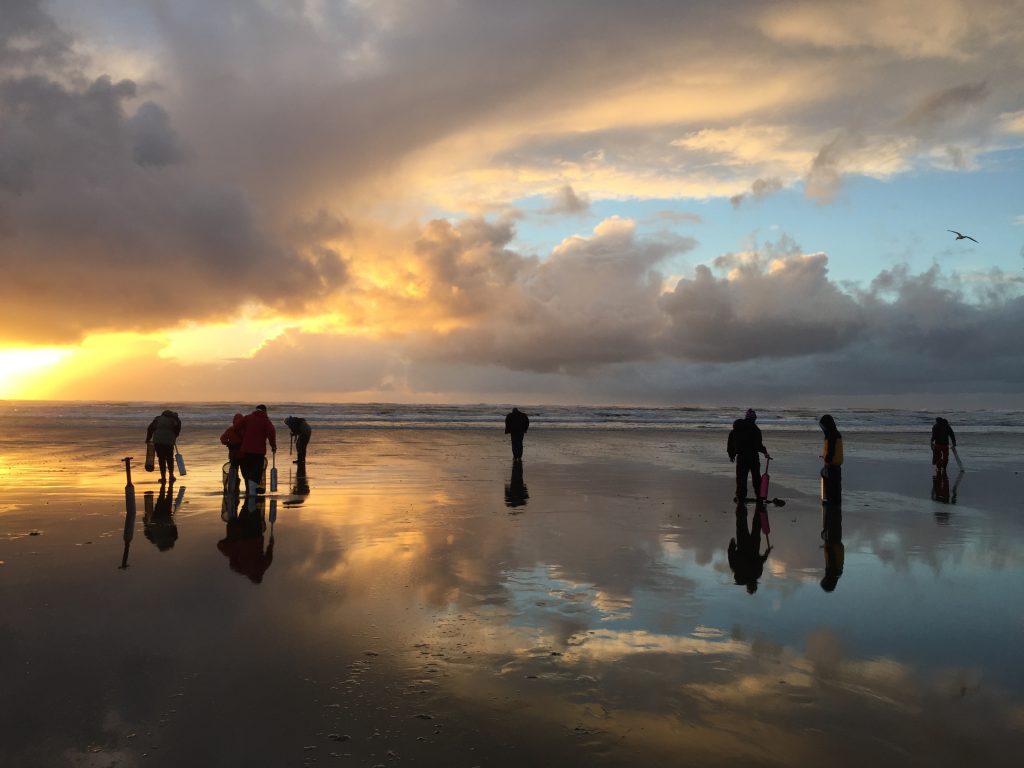
Not sure where the term “happy as clam” came from, but clam diggers will be very giddy with the news leaking out of the Washington Department of Fish and Wildlife (WDFW) regional office in Montesano.
The WDFW staff has been busy this summer conducting razor clam abundance assessments and have just one more portion of Long Beach to review at the end of this month, but the early signals are looking excellent for the upcoming 2019-2020 season.
“Overall, we are looking at a great season of digging,” said Dan Ayres, the head WDFW coastal shellfish manager. “We’ve got a nice uptick in razor clam populations.”
Starting in the southern section at Long Beach, which saw one of the shortest digging seasons (four opening days to be exact) during 2018-2019 could see a dramatic increase. Ayres predicts it is likely to be 10 times larger from just a year ago as close to 10 million juvenile clams will reach adult status by this coming season.
“We knew Long Beach had a really strong population of juvenile clams last year and they survived well up to now,” Ayres said. “They’re not the biggest clams on earth (about 25% measure more than 4 inches and most are 3 to 3.6 inches) but they will be diggable and we’ll have more digging in the upcoming season.”
Long Beach hit a low point in 2017-2018 when adult clam population levels were the lowest seen in the past 25 years.
Summer assessments two years ago at Long Beach showed very few pre-recruits of juvenile clams and it was “scary” news for the short term. One theory for the huge dip could be related to the low salinity levels due to freshwater run-off from the Columbia River on a good portion of Long Beach, which isn’t a favorable situation for young clams to grow.
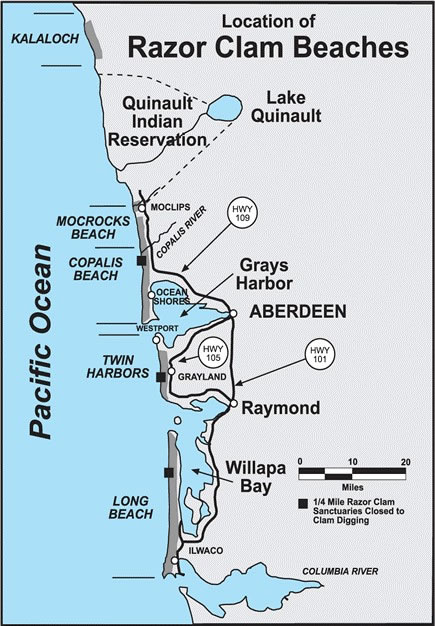
Summer assessments were completed on Aug. 3 at Twin Harbors beaches and the harvestable number of clams will be up from 1.4 million last year to 1.8 million this year. Last year diggers at Twin Harbors harvested 1.2 million clams of a total allowable catch (TAC) of 1.37 million.
At Copalis near Ocean Shores the TAC is 2-plus million and up dramatically from the 860,100 clams last year. Copalis saw an extremely strong recruit year with 10.5 million clams. Razor clams at Copalis averaged a healthy 4.1 inches.
To the north, Mocrocks beaches also has a strong population of razor clams with a slight increase of 1.65 million TAC over last year’s share of 1.5 million.
Ayres says the TAC is down at Kalaloch, but they plan on getting some digging days plugged into the schedule. WDFW still hasn’t engaged in talks with the Olympic National Park staff on their digging proposals. The clams at Kalaloch are noticeably small and barely 3 inches so there is some concern.
In all there was 58 digging days coast-wide in 2018-2019 with 273,000 digger trips producing a harvest of 3.7 million razor clams. Success was also very good with an average of 13.6 clams per digger trip – a daily limit is the first 15 clams dug regardless of size or condition.
A breakdown by coastal beaches showed four opening days at Long Beach (16 days in 2017-2018); 53 days at Twin Harbors (18); 20 days at Copalis (12); 33 days at Mocrocks (20); and six days at Kalaloch (none).
Coast-wide clam digging was open Oct. 11-13, Oct. 25-28, Nov. 8-11, Nov. 22-25, Dec. 6-9, Dec. 20-23, Jan. 2-6, Jan. 17-21, Feb. 1-3, Feb. 15-21, March 16-17, March 21-24, April 6-8, April 20-22 and May 18-20.
Razor clam digging is a huge money maker for small coastal communities who rely on these razor clam digs during the lean tourist times in fall, winter and spring to help boost their economy.
WDFW is keeping a close eye on a marine toxin known as domoic acid – a natural toxin produced by certain types of marine algae – that can be harmful or even fatal if consumed in enough quantities.
So far, this spring and early summer marine toxin levels for domoic acid remained under the 20 parts-per-million (ppm) cutoff, but levels of a diatom known as Pseudo-nitzschia have increased off the northern Oregon coast and the southern Washington coast.
“We’re crossing our fingers in regard to marine toxins especially from what we’ve been seeing lately,” Ayres said. “We’re also closely monitoring the warm water off the coast. Mother Nature has thrown a curve ball in past years when we’ve had great seasons like what we expect in 2019 and 2020.”
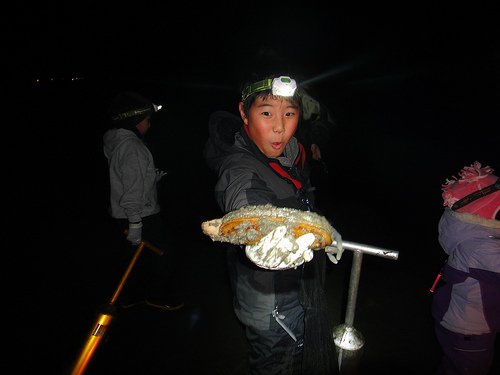
The good news is that the National Oceanic and Atmospheric Association says ENSO conditions have shifted to neutral. Enso refers to the El Niño/Southern Oscillation, the interaction between the atmosphere and ocean in the tropical Pacific that results in a somewhat periodic variation between below-normal and above-normal sea surface temperatures and dry and wet conditions over the course of a few years.
The entire coast was closed in late May of 2015 when domoic acid spiked well above the 20 parts per million cut-off level
Since 1991, when the toxin was first detected on the Pacific Coast, outbreaks of domoic acid have prompted the cancellation of three entire razor-clam seasons in Washington — the last one in 2002-03. Twin Harbors Beach never opened in 2015-2016 as marine toxin levels never dipped below the action level.
Fall and winter razor clam digs occur during evening low tides while spring-time digs occur during morning low tides.
Final approval on dates for the fall and winter season will be determined sometime in September by WDFW although in past years it usually gets underway by the middle of October.
Discussions between WDFW and tribal fishery co-managers have been completed and shellfish managers are drafting up specific digging dates.
WDFW plans to get the razor clam management information on their website sometime in September, and the public is welcome soon after to leave comments on upcoming seasons.
Local salmon fishing news
I’m not one to moan and groan over how the summer hatchery chinook fishing seasons have gone in local marine areas and in fact it was surprising how long it ran in in northern and central Puget Sound (Area 9 and 10).
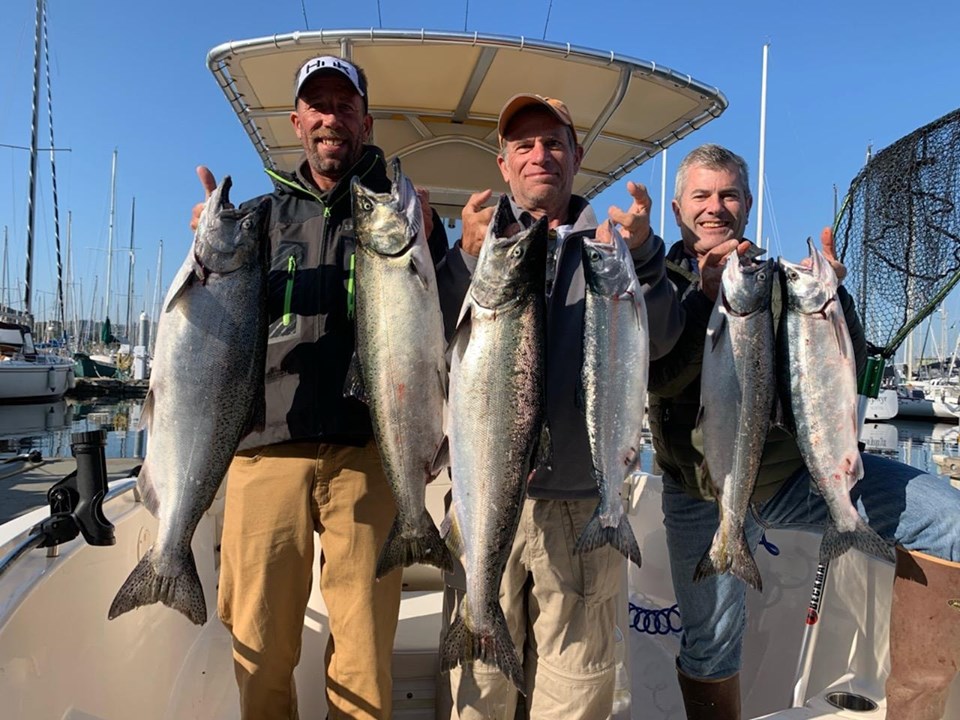
“We had a good run on a small quota, and it did last longer than anyone had expected,” said Justin Wong, owner of a Plug Cut Charter in Seattle, whose been scoring near or daily limits of hatchery kings for his customers since the season got underway on July 25.
Northern Puget Sound had a total 13 days of hatchery chinook fishing opportunities since it opened on July 25. The WDFW estimate shows 7,779 boats with 17,147 anglers kept 3,446 hatchery chinook (6 unmarked chinook were illegally kept) and released 1,124 hatchery chinook and 756 unmarked chinook for 5,331 total chinook encounters, plus 692 coho retained (of those 22 unmarked were illegally kept). The chinook retained per trip was 0.2013.
Northern Puget Sound will remain open daily through Sept. 30 for pinks and hatchery coho.
The central Puget Sound (Area 10) hatchery chinook fishery closed this past Friday (Aug. 16) and had been open daily since July 25.
From Aug. 12-15, 1,138 boats with 2,185 anglers in Area 10 kept 558 hatchery chinook and released 135 hatchery chinook and 180 unmarked chinook, for 873 total chinook encounters, plus 132 hatchery coho and 102 unmarked coho were kept. The season total is 7,092 boats with 14,829 anglers kept 2,930 hatchery chinook (17 unmarked chinook were illegally kept) and released 732 hatchery chinook and 927 unmarked chinook for 4,582 total chinook encounters, plus 1,075 hatchery coho and 586 unmarked coho kept. The hatchery chinook retained per trip was 0.1987.
Central Puget Sound is open daily through Nov. 15 for pinks and hatchery and unmarked coho.
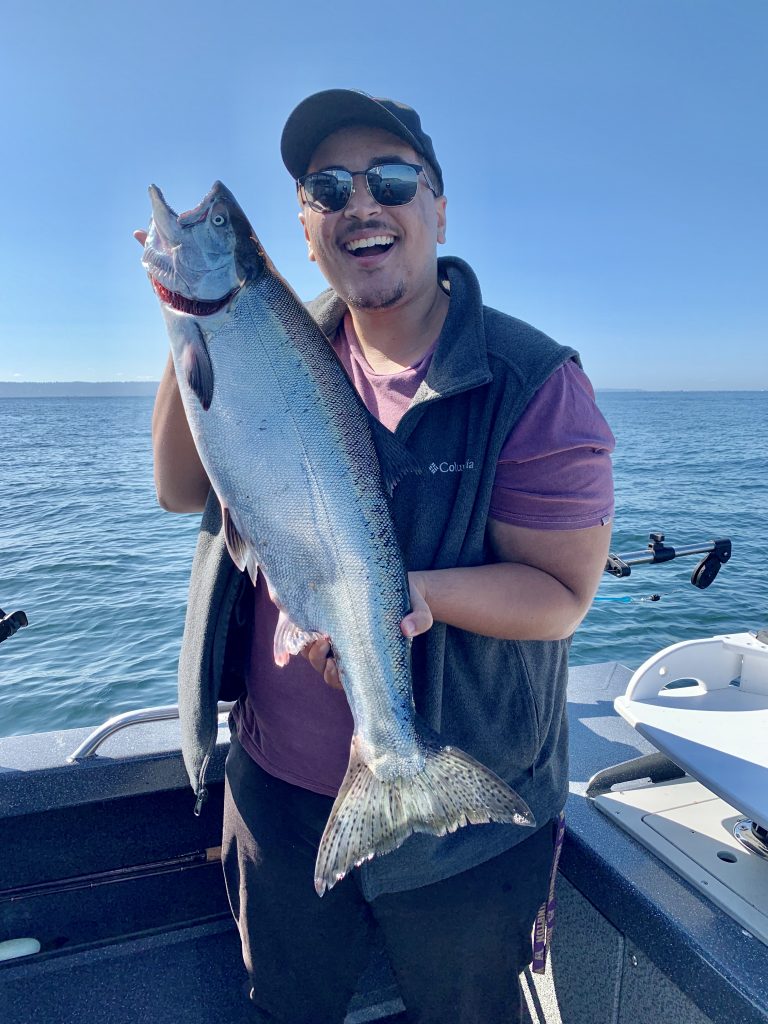
WDFW will reassess catches for south central Puget Sound (Area 11) on Monday (Aug. 19). The harvest estimate had reached 79 percent as of this past Thursday (Aug. 15) or 2,223 hatchery chinook caught in a catch quota of 2,805.
Once Area 11 achieves their hatchery chinook catch quota then it will be open daily through Sept. 30 for all coho and pinks with non-retention of chinook. Fishing right now is open Saturdays to Wednesdays of each week (closed Thursdays and Fridays) through Aug. 31 or until the quota is reached for hatchery chinook.
In Area 11 from Aug. 12-15, 1,046 boats with 1,988 anglers kept 228 hatchery chinook and released 252 hatchery chinook and 741 unmarked chinook for 1,221 total chinook encounters.
The Area 11 season total is 7,111 boats with 12,866 anglers kept 2,214 hatchery chinook (9 unmarked chinook were illegally kept) and released 2,452 hatchery chinook and 7,199 unmarked chinook for 11,876 total chinook encounters. The legal-size mark rate is 37.5% and overall mark rate is 39.3%.
At Sekiu in the Strait of Juan de Fuca (Area 5) the hatchery chinook retention ended this past Friday (Aug. 16) but remains open for hatchery coho and pinks through Sept. 30.
The Area 5 total legal-size encounter is 7,809 hatchery chinook of a catch guideline of 8,294 which puts the area at 94 percent. From Aug. 5-11, 1,098 boats with 2,726 anglers kept 671 hatchery chinook (3 unmarked chinook were also illegally kept) and released 704 hatchery chinook and 872 unmarked chinook for 2,250 total encounters.
From July 1-Aug. 11, 6,332 boats with 15,378 anglers in Area 5 kept 4,334 hatchery chinook (8 unmarked chinook were also illegally kept) and released 4,552 hatchery chinook and 5,646 unmarked chinook for 14,540 total encounters.
Elsewhere, Port Angeles (Area 6) in the Strait of Juan de Fuca is open daily for hatchery coho and pinks through Sept. 30. The San Juan Islands (Area 7) reopen Sept. 1-30 for all coho and pinks.
The east side of Whidbey Island (Area 8-1) is open through Oct. 31 for coho only. The east side of Whidbey Island (Area 8-2) is open daily through Sept. 15 south of Mukilteo-Clinton ferry docks for pinks and hatchery coho.

